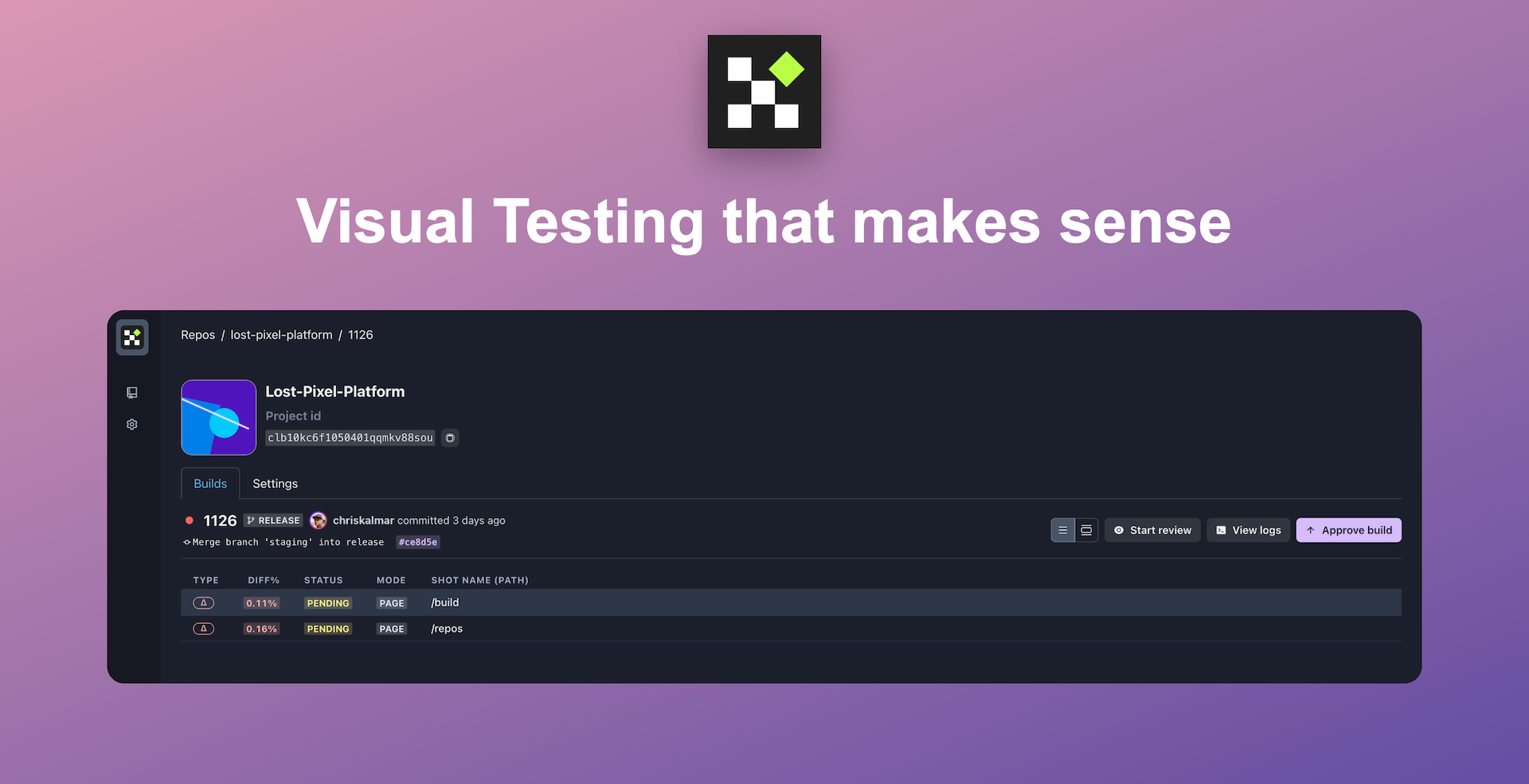Imagine releasing a new feature only to find out it broke something else in your software.
This happens more often than you might expect, especially when updates are not well-tested.
Software developers and QA testers use a variety of tests to guarantee that an application performs as expected.
Two important types of software testing are smoke and regression testing.
Both are used to achieve the same goal of evaluating every new release of an application, but they serve different purposes and are used at different phases of software testing.
This guide will help you understand the key differences between regression and smoke tests and when to use them to increase quality and accuracy.
Let's get started.
What is Regression Testing?

Regression testing is an important process in software development that checks if existing features still work after new changes are made.
Imagine you are working on an app that runs smoothly.
When you add a new feature or fix a bug, you would expect everything to continue working as it should, right?
But that is not always the case. Even small changes can sometimes cause unexpected issues in other parts of the application.
Regression testing is how you can catch these problems before they reach users.
Example:
Let's consider the example of an online shopping app.
After adding a new payment method, you would need to perform regression testing to make sure that the new feature functions well on its own without breaking the older features.
Regression testing would check if:
- Other payment options still work.
- Users can still browse items.
- User account functions correctly.
- The shopping cart behaves as expected.

Set up visual regression tests in minutes with Lost Pixel Platform. Do not let your users find bugs first.
Key Characteristics of Regression Testing
Regression testing is essential for validating software reliability as it evolves.
It also helps to maintain software quality and prevents new bugs after updates.
Here are the key characteristics of this type of testing:
- Broad Coverage: Regression testing does not just focus on the specific changed area. It checks other parts of the software to ensure any code change did not accidentally break something in another part. This provides comprehensive coverage of core functionalities.
- Re-run Old Tests: Regression testing involves reusing previously passed tests and running them again to test new changes. There is no need to write new test cases every time. You can just update the already written tests based on requirements. This makes regression test suites easier to maintain and scale.
- Cover Critical Functions: It focuses on integral parts and critical features of the software that users rely on most. This is important to make sure that code modifications or updates do not compromise system stability and quality.
- Detect Edge Cases: Regression testing helps catch hidden issues that might not be obvious right away and only surface when a user interacts with the system in a certain way.
- Iterative Process: Regression testing in Agile development helps ensure that the software's existing features remain intact every time a new change is implemented.
- Visual Testing: Visual regression testing is particularly helpful for identifying and catching visual bugs and maintaining consistency in UI design.
- Automated and Manual Testing: Regression testing can be done manually or automatically. Automated regression testing uses automation tools to execute tests, repeatedly saving time and increasing efficiency.

Set up visual regression tests in minutes with Lost Pixel Platform. Do not let your users find bugs first.
What is Smoke Testing?

In software development, smoke testing is a quick, initial check to ensure that the software's most basic and critical functions work.
Smoke testing is a hardware testing method in which engineers test a new device and check if it emits smoke or shows obvious signs of failure due to malfunction.
Software smoke testing does the same in the development and testing process.
If the basic functions don't work, you stop and fix them before continuing.
This prevents wasting time and resources on testing a build that is not stable from the start.
Example:
Imagine you are performing smoke tests for an e-commerce app. After a new build is deployed, a smoke test would check the following:
- The app opens without crashing.
- Users can log in with valid credentials.
- Users can browse items and add them to a cart.
If the app fails to load or crashes during login, it fails the smoke test.
There is no need for further testing if users cannot even access the app.
You need to fix this major issue before more comprehensive testing activities can continue.
Key Characteristics of Smoke Testing
Smoke testing is necessary as it allows developers to perform in-depth testing, such as functional or regression testing.
Here are the key characteristics of smoke testing:
- Core Functionality Check: Smoke testing focuses on the software's most important features to check if they work as expected, such as installation, login, and logout functionality.
- Build Verification Testing: Smoke testing is typically done after every new build or update to make sure the system is not broken in some major way. This is especially important when working on large projects where changes happen frequently, and you need to confirm that each new version of the software is stable enough for future testing.
- Early Issue Detection: Smoke testing helps catch major problems early so developers and testers can focus on the most relevant issues.
- Non-exhaustive Testing: Smoke testing is a surface-level testing of the core features. It does not go deep into the more complex parts of the software.
- Quick Execution: Smoke testing is designed to be quick. Instead of running a large number of detailed tests, it gives the software a quick once-over to make sure it is ready for additional testing.
- Manual or Automated Testing: Like regression testing, smoke testing can be automated or performed manually. Automated smoke tests run quickly and can be scheduled after every new build, making them perfect for regular, repetitive checks.

Set up visual regression tests in minutes with Lost Pixel Platform. Do not let your users find bugs first.
Differences Between Smoke Testing and Regression Testing
Now that you know the key characteristics of both testing types, let's overview their main differences, uses, and roles in software development.
Purpose
Regression and smoke testing have different purposes in the development process.
The purpose of regression testing is simple: to catch any issues caused by recent changes before they become problems for users.
Regression testing checks the overall functionality of the software, verifying that everything that used to work still works after updates and new features do not disrupt existing functionality.
On the other hand, smoke testing is a quick health check of the software's build.
It is done to catch major issues early before wasting time on more thorough tests.
Scope of Testing
Regarding the scope of testing, regression testing has a much broader coverage than smoke testing.
Regression testing includes end-to-end testing of the entire application, covering both new and old features to ensure everything works together correctly.
Smoke testing is high-level testing that checks if the critical features of the application are working as expected.
Tip:
Regression testing involves end-to-end tests, but there are major differences between them. Read regression vs end-to-end testing for a detailed comparison.
Test Execution Time
Another difference is the timing of test execution.
Regression testing can take a long time because it involves rerunning many test cases.
Automating regression tests helps speed up this process, but it is still more time-consuming compared to smoke testing.
Smoke testing process is fast and short, sometimes taking just a few hours, depending on the complexity of the software.
This allows the testing team to get quick feedback on whether the software build is stable enough.
Testing Frequency
Regression testing is performed regularly throughout the development process to make sure the system is stable after changes are made to the codebase.
Such as:
- After bug fixes or adding new features.
- Before major releases or after version updates.
- When system performance is optimized.
- There is a change in environment.
- During regular system maintenance.
In contrast, smoke testing is typically performed at the start of the development cycle to check a new build's stability before moving on to more in-depth testing.
Such as:
- After a new build or major update.
- As a preliminary testing phase before major testing.
- After integrating code changes.
Who Can Perform?
Developers often perform smoke testing to check that basic functionality works before passing the software to the QA team for more testing
In comparison, QA testers are primarily responsible for regression testing.
Tools for Smoke And Regression Testing
Many automation testing tools are available that provide enhanced test coverage, accuracy, and speed.
Here are some popular options you can check out:
- Lost Pixel
- Selenium
- JUnit
- Appium
- Ranorex
- testRigor

Set up visual regression tests in minutes with Lost Pixel Platform. Do not let your users find bugs first.
Final Words
Regression testing and smoke testing are both important for maintaining software quality.
Both have their purpose, scope and benefits in the software development lifecycle.
This guide will help you learn the key differences between the two testing types and when to use each for improved quality assurance.
FAQs
What is the difference between system testing and regression testing?
System testing checks the complete functionality of the entire software, while regression testing checks that recent changes have not broken any existing features.
What is the difference between smoke testing and sanity testing?
Smoke testing checks the core functionality of the entire system after a new build, while sanity testing verifies specific fixes or changes in a specific part after minor updates.

About Dima Ivashchuk
Hey, I'm - Dima the co-founder of Lost Pixel. I like modern frontends, building stuff on the internet, and educating others. I am committed to building the best open-source visual regression testing platform!
